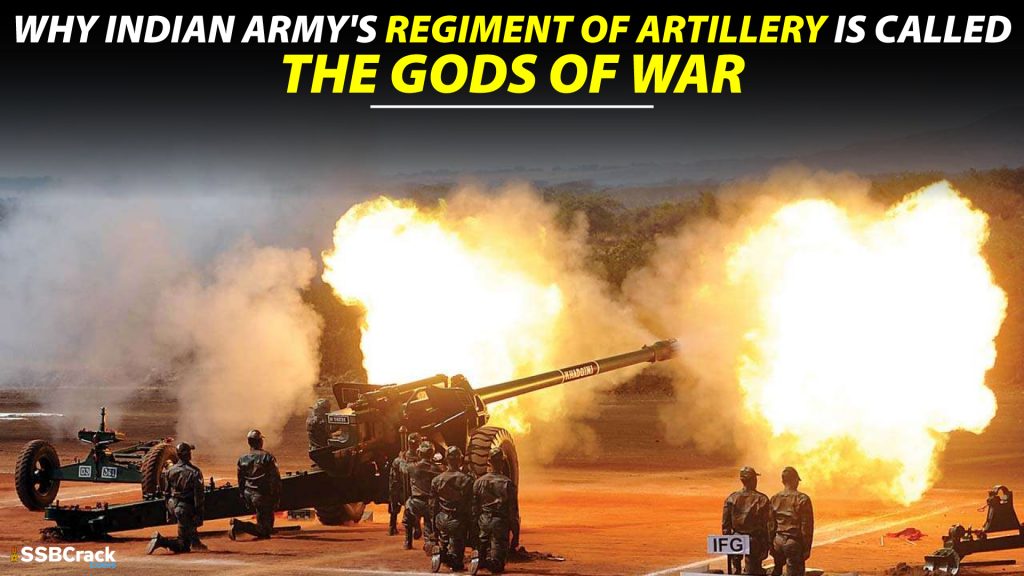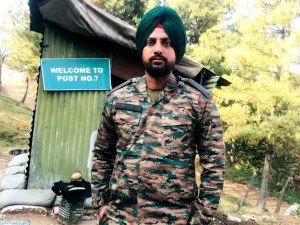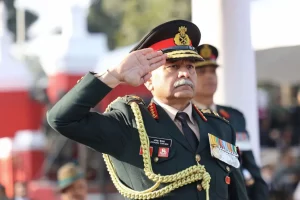Jai Hind future warriors today we are going to discuss Indian artillery and its modern-day role. We will cover the topics in the following way
- History
- Classification
- Application
- Modern Day Role
- Conclusion
History of Indian Artillery during British Rule and after that:
The foundation of the Regiment of Artillery was laid on September 28 in 1827 when Bombay Artillery, later renamed 5 Bombay Mountain Battery, was raised. This day is celebrated by the Regiment of Artillery as Gunners Day.
In May 1857, the mutiny by Indian soldiers started in the artillery of the Army of the Bengal Presidency. The incident prompted a complete ban on Indian artillery units, except the mountain artillery batteries in select provinces. The decision was reversed in the mid-1930s when the first of the field regiments — which support the other formations on the field — of the Indian Army were raised.
Note: The rockets used by Mysore ruler Tipu Sultan’s artillery were too much advanced for that era and that inspired the British to develop their rockets on that, the legacy of it was so high that there is a portrait of Tipu Sultan’s rockets in action, in NASA’s rocket launch centre. We will be covering about this in detail in a later post.
Motto of the Regiment:
- ‘Sarvatra Izzat-O-Iqbal’ which literally means ‘Everywhere with Honour and Glory’
The gunners have been awarded following medals for their gallantry:
- 1 Victoria Cross
- 1 Distinguished Service Order
- 15 Military Crosses (pre-independence era)
- 1 Ashok Chakra
- 7 Maha Vir Chakras
- 9 Kirti Chakras
- 101 Vir Chakras
- 63 Shaurya Chakras
- Six Bar to Sena Medal
- 485 Sena Medals
Classification of Artillery
There are various kinds of artillery in service like
- Field artillery
- Air Defence Artillery(includes Army Air Defence and Army Aviation Corps)
- Coastal artillery
Ground-based artillery which takes part in land warfare is termed as Field artillery.
We will discuss the classification of field artillery weapon systems on basis of size, weight, mobility, and its suitability of employment. They are:
Infantry Support Guns
- A self-propelled infantry gun (assault gun) is an armoured gun-armed vehicle designed to provide direct fire support for infantry and armoured forces. These are direct firing weapons of higher calibre and include 106mm recoilless rifle (RCL), automatic grenade launcher (AGL) 81mm mortars, etc.
Mountain Guns
- Mountain guns are artillery pieces designed for use in mountain warfare and areas where usual wheeled transport is not possible. They are similar to infantry support guns, but are lightweight and are generally capable of being broken down into smaller loads (for transport by horse, human, mule, tractor, and/or truck).
- Indian manufactured 75/24 howitzers and British 3.7-inch howitzers are examples of mountain guns.
Field Guns
- Originally the term referred to smaller guns that could accompany a field army on the march, that when in combat could be moved about the battlefield in response to changing circumstances, These weapons are specialized for mobility, tactical proficiency, short range, long range, and extremely long range target engagement.
- Capable of firing over long ranges they generally fired at a low angle up to 45-degree elevation. The Russian 100mm gun and 130mm guns and the British 25 pounder gun are examples of field guns.
- They are now mostly outdated and are replaced by howitzers, rocket artillery and mortars.
Mortar
- Modern mortars and their ammunition are generally much smaller and lighter than artillery, such as guns and howitzers, which allows light and medium (typically, 60 mm and 81 mm/82 mm) mortars to be considered light weapons; i.e. capable of transport by personnel without vehicle assistance. They are short-range weapons and often more effective than artillery for many purposes within their shorter range.
- In particular, because of its high, parabolic trajectory with a near vertical descent, the mortar can land bombs on nearby targets, including those behind obstacles or in fortifications, such as light vehicles behind hills or structures, or infantry in trenches or spider holes. This also makes it possible to launch attacks from positions lower than the target of the attack.
- For example, long-range artillery could not shell a target 1 km away and 30 metres (100 ft) higher, a target easily accessible to a mortar.
- Mortars fire only at a high angle. They look different than a gun. Typically they are short-barreled, high trajectory weapons with a range substantially less than field guns.
Howitzers
- A howitzer is generally a large ranged weapon between an artillery gun – which has smaller, higher-velocity shells fired at flatter trajectories – and a mortar – which fires at higher angles of ascent and descent. Howitzers, like other artillery equipment, are usually organized in a group called a battery.
- These are the guns which can fire both in low and high angle. Such guns are capable of engaging targets behind hills and ridges where field guns cannot succeed. Almost all modern gun systems are howitzers.
Rocket Artillery
- These are rocket-propelled artillery systems with a large warhead. They are used to destroy a specific area on the ground. During the Indo-Pak Conflict 1999 in Kargil, Indian artillery utilized the Russian BM 21 rocket artillery system in direct firing role on Tiger Hill with devastating effect.
Cruise Missile
- These are later addition to artillery. They use a combination of rockets and advanced inertial navigation systems with large warheads to destroy targets up to 300 km. Indian BrahMos supersonic cruise missile and US subsonic Tomahawk are examples of this artillery system.
Surface to Surface Missile
- These transcend conventional and strategic spectrum. Indian Prithvi and Agni missiles both with conventional and nuclear warheads, can engage targets over long distances up to 5000 km. Agni missiles, K4, and k12 fall under this category.
Application of Artillery Fire:
The kind of field artillery fires that are likely to be called during the various stages of battles are as follows:-
- Pre-Arranged Fire: They are planned beforehand and aim to cause sizeable(which is pre-decided) destruction of the enemy.
- Opportunity Fire: They are artillery engagements such that the advantage is derived from the operational situation. Limited number of guns are employed in such situations.
- Observed Fire: They can be both pre-arranged or opportunity fire. The enemy is engaged by the artillery by observing the landing of the artillery shells near the enemy and correcting it using trained methods and technologies.
- Predicted Fire: Technology is used to bring out the firing data much in advance. Larger numbers of guns are employed in this scenario. It provides max. surprise to the enemy
- Degradation Fire: Aimed to destroy the enemy’s operational capabilities before the operation even begins. The use of air power (attack helicopters and fighter jets) also form a part of this.
- Counter Bombardment: Aims at engaging and silencing enemy guns and other weapon systems in operational situation.
- Interdiction Fire: Aims at interdicting (intercepting) enemy’s movements, logistics movement, tank harbors and then causing loss to the enemy by destroying his crucial links to logistics and weapon systems. This was what Pak Army planned to do in Kargil War by cutting off India’s link to the NH1 and they wanted stop the reinforcements, logistics support from reaching the Indian soldiers, but failed miserably due to the superiority of Indian Artillery which fired over 2,50,000 shells and rockets. Even though the Pakis were in an advantageous position, Indian artillery proved just too much for them. This example itself is enough to prove that the better artillery never loses, they just keep on destroying the enemy
- Covering Fire: Providing artillery cover to own forces by engaging the enemy’s artillery .
- Defensive Fire. Artillery support to own forces for strength in defensive battles. It aims to inflict heavy casualties on enemy forces by attacking their defenses.
- Harassing Fire. Aims to harass the enemy by engaging in occasional moments and situations, so as not to give the comfort of safety and create an unknown fear in their mind. It aims to undermine the character and mental strength of the enemy. It has a short-term and long-term negative effect on enemy troops.
- Preparatory Fire: This combination of weapon fire is used before the start of the enemy attack. These can be observed or predicted
Modern Day Role of Artillery
Artillery is extensively being deployed and used in the counter insurgency (CI) battles. Earlier the artillery used to be avoided in counter insurgency operations because of the concern of the collateral damage, and with the advent of precision ammunition, its role has attained a lot of importance.
Artillery formations have been deployed in counter insurgency operations in Jammu and Kashmir as well as the northeastern theatre by the Indian Army
With the introduction of self-propelled and automated artillery weapon systems, the footprint of artillery has been reduced because of the removal of ancillary(support) systems. These advancements have also helped in increasing the survivability of the systems against enemy fire because their ability to manoeuvre in all types of terrains has also increased.
The introduction of ‘force multipliers’ like satellite communication, UAVs, networked electronic systems, and artificial intelligence have increased the efficacy of artillery and have again underlined its role as a decisive arm on the battlefield.
As already covered in our earlier posts with the passing out of the first batch of RPAs trained in India and strengthening of Army Aviation with more attack helis (earlier Army Aviation used to come under Artillery, even today most of its officers are derived from Artillery), our enemies must be too foolish to engage our artillery.
Conclusion
Hope this post was informative for you. For more such posts related to defence exams and SSB Interview stay tuned.
You can prepare for defence entrance exams such as NDA, AFCAT, INET, and CDS by taking Written Online courses as they will not only give you access to full-length quality lectures but will also provide the facility to take standardized mock tests for better study and strategic growth in the exam. You can take multiple quizzes after each lesson to ensure the full understanding of the subject along with creating your customized lesson plans. You can check out the course content along with other important specifics at SSBCrackExams.
Also Read:


















